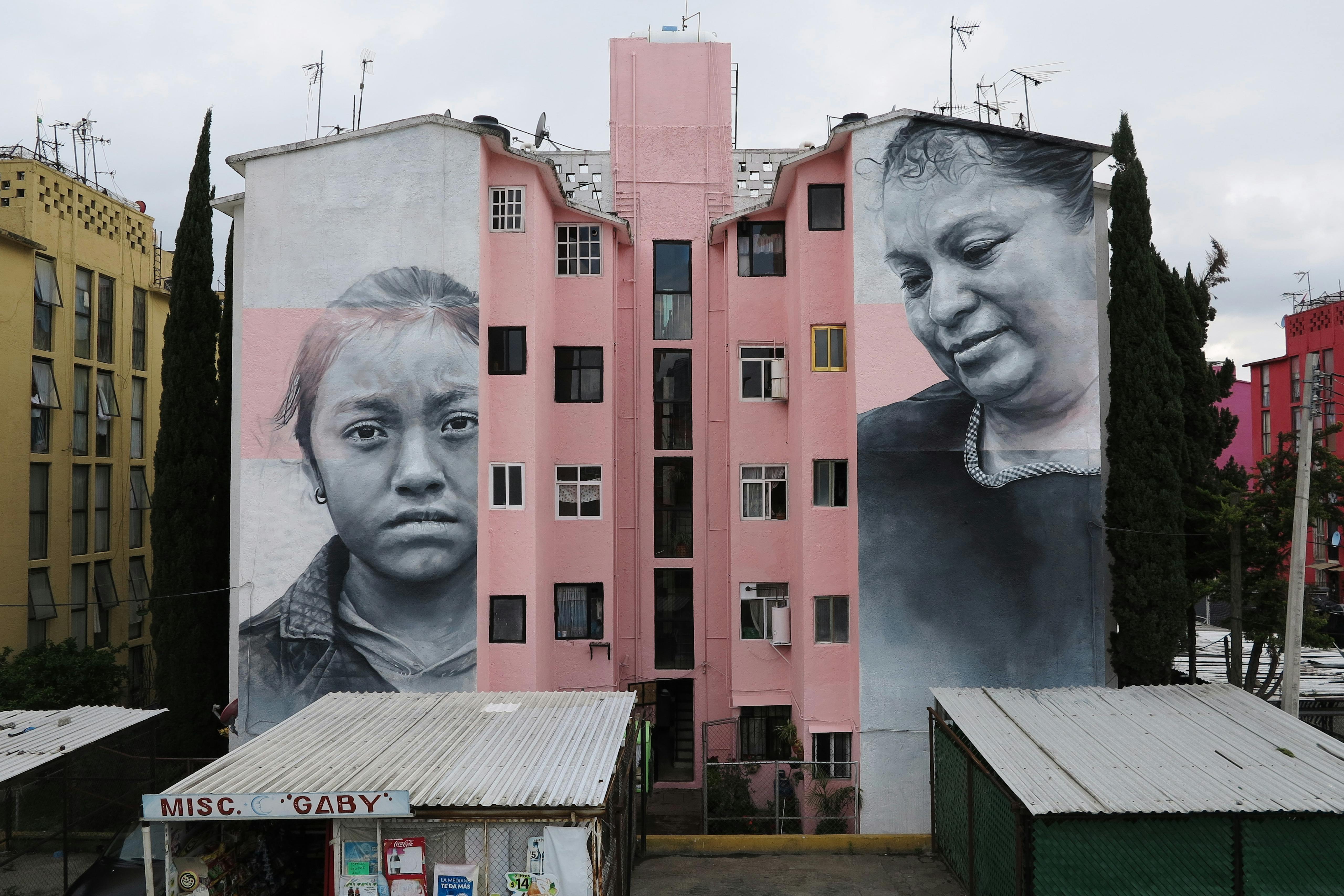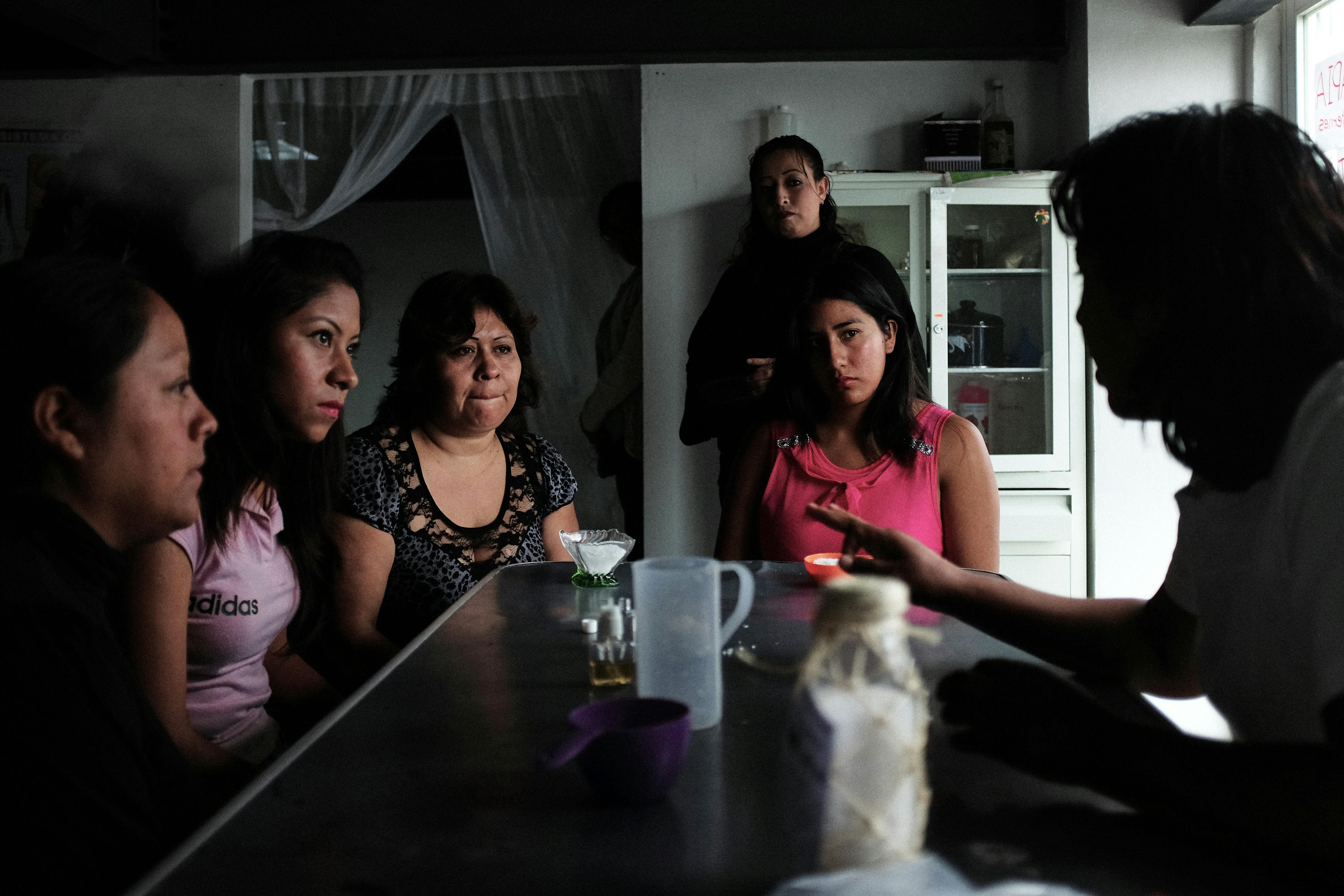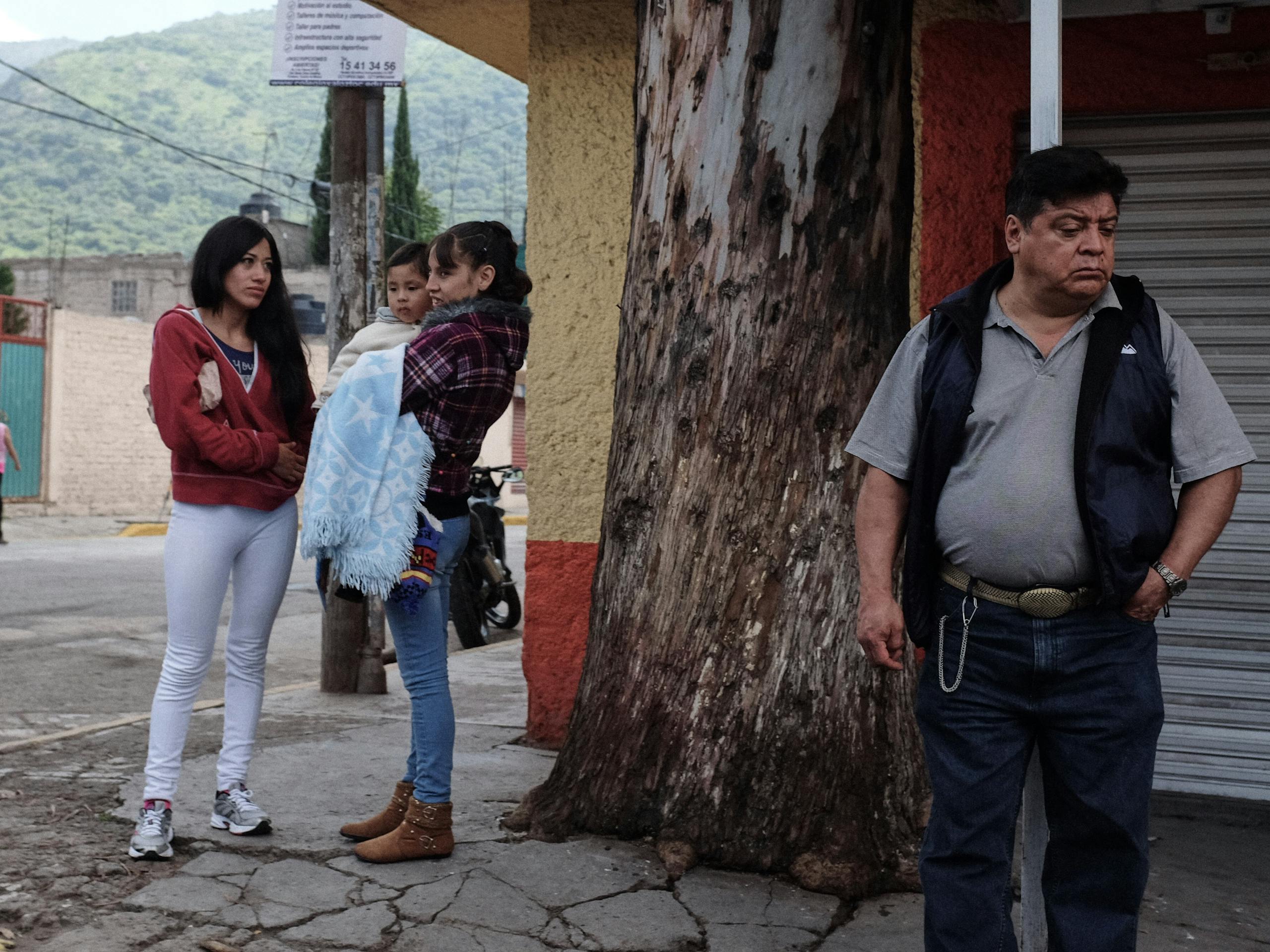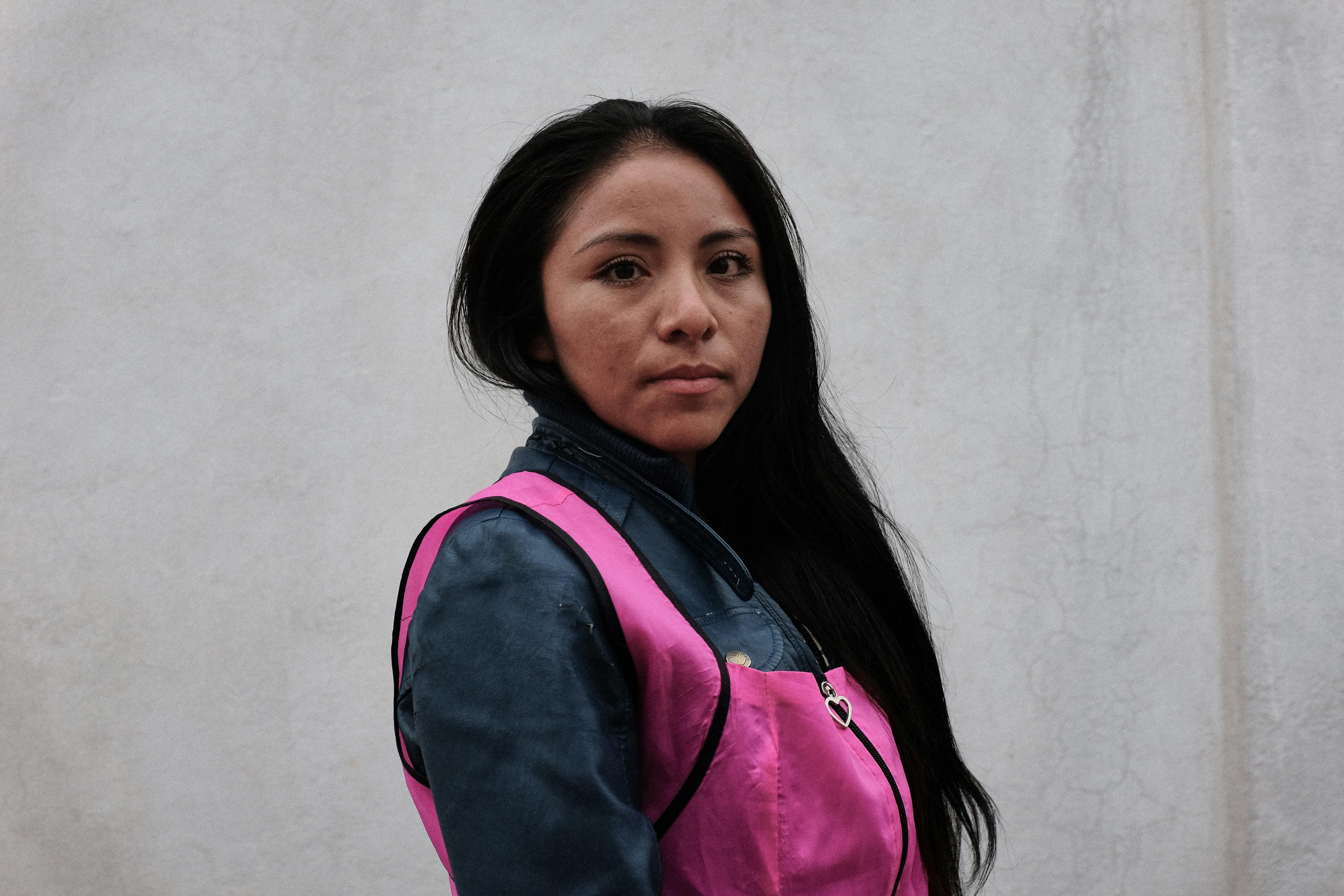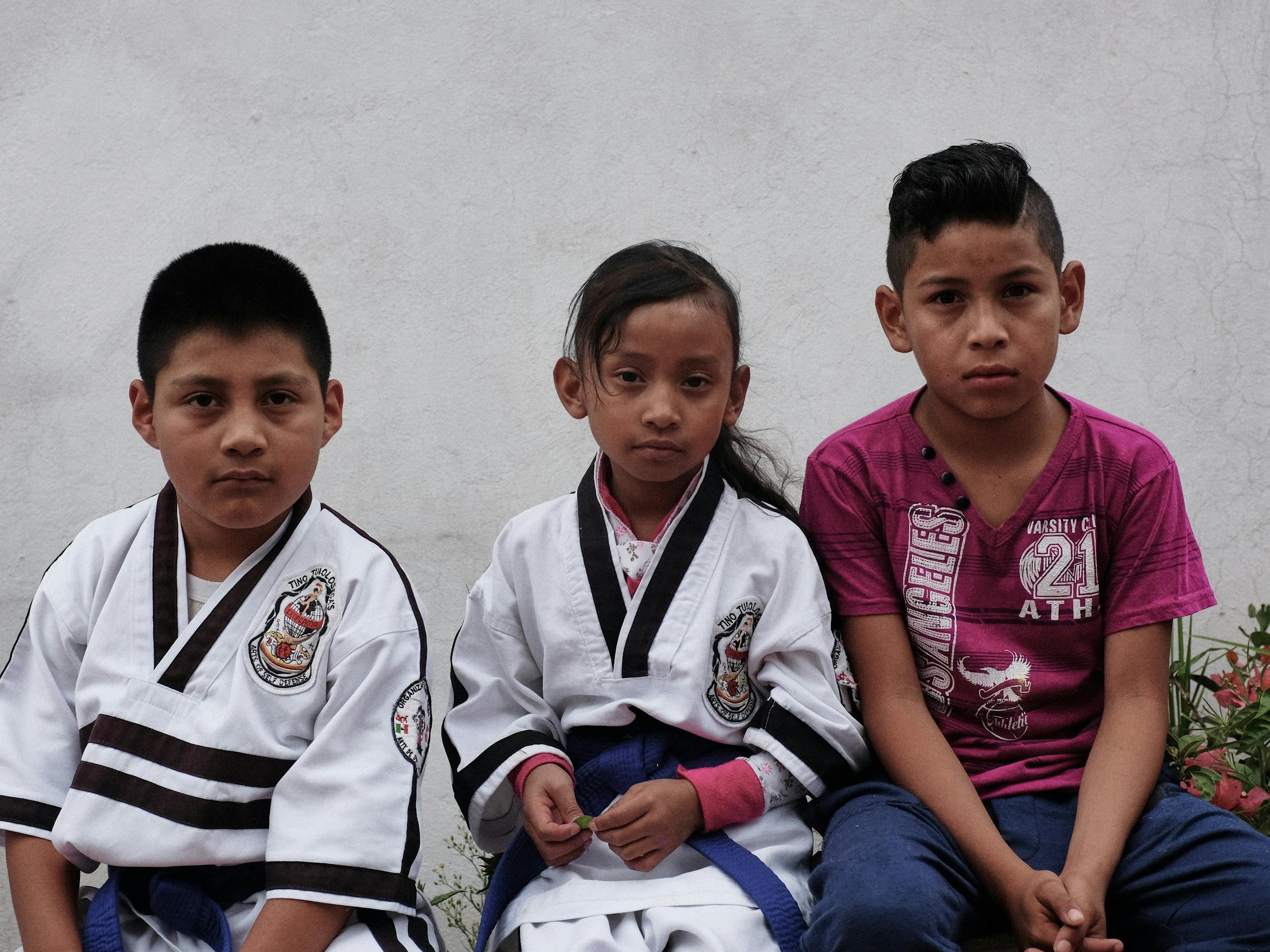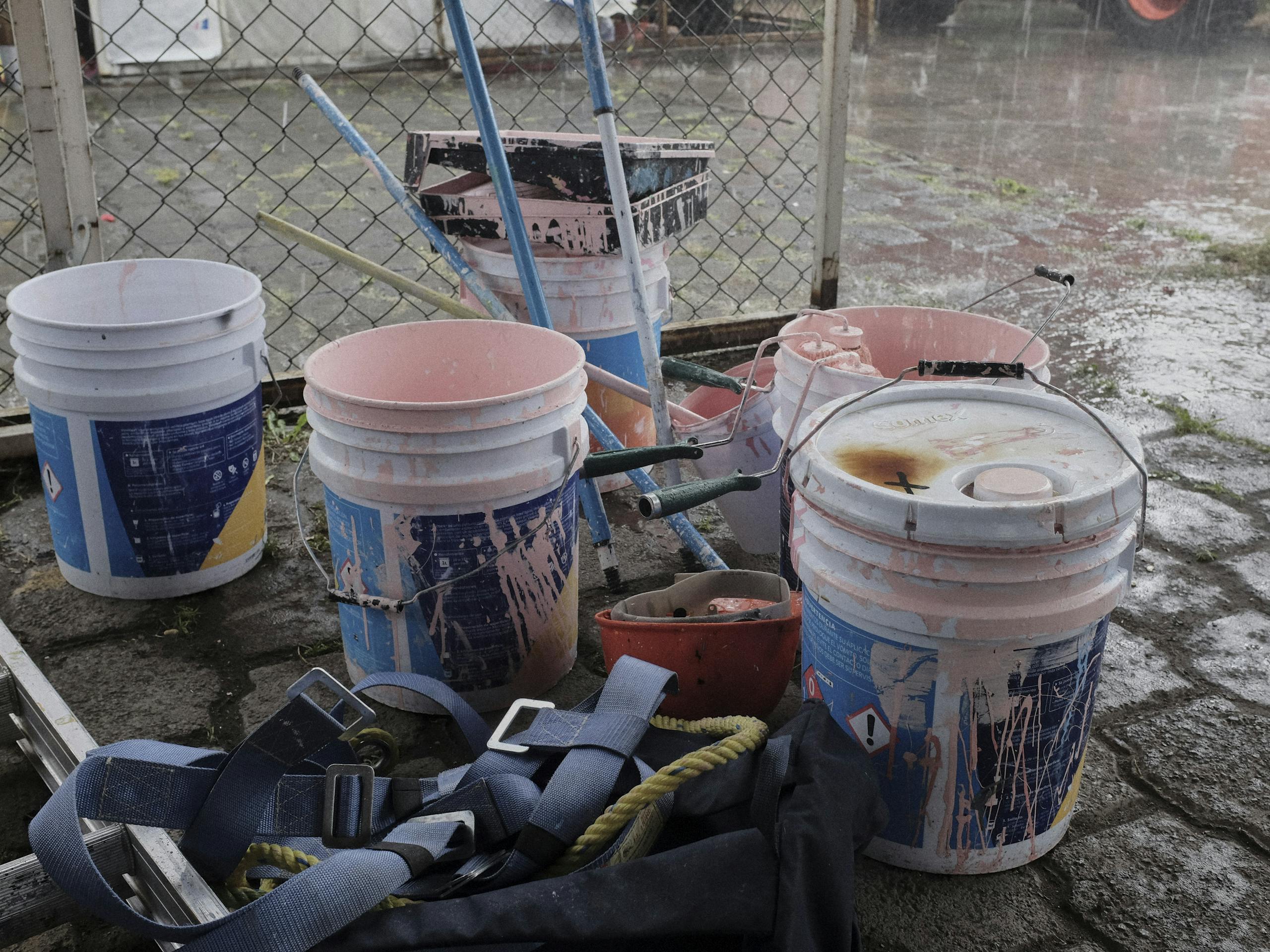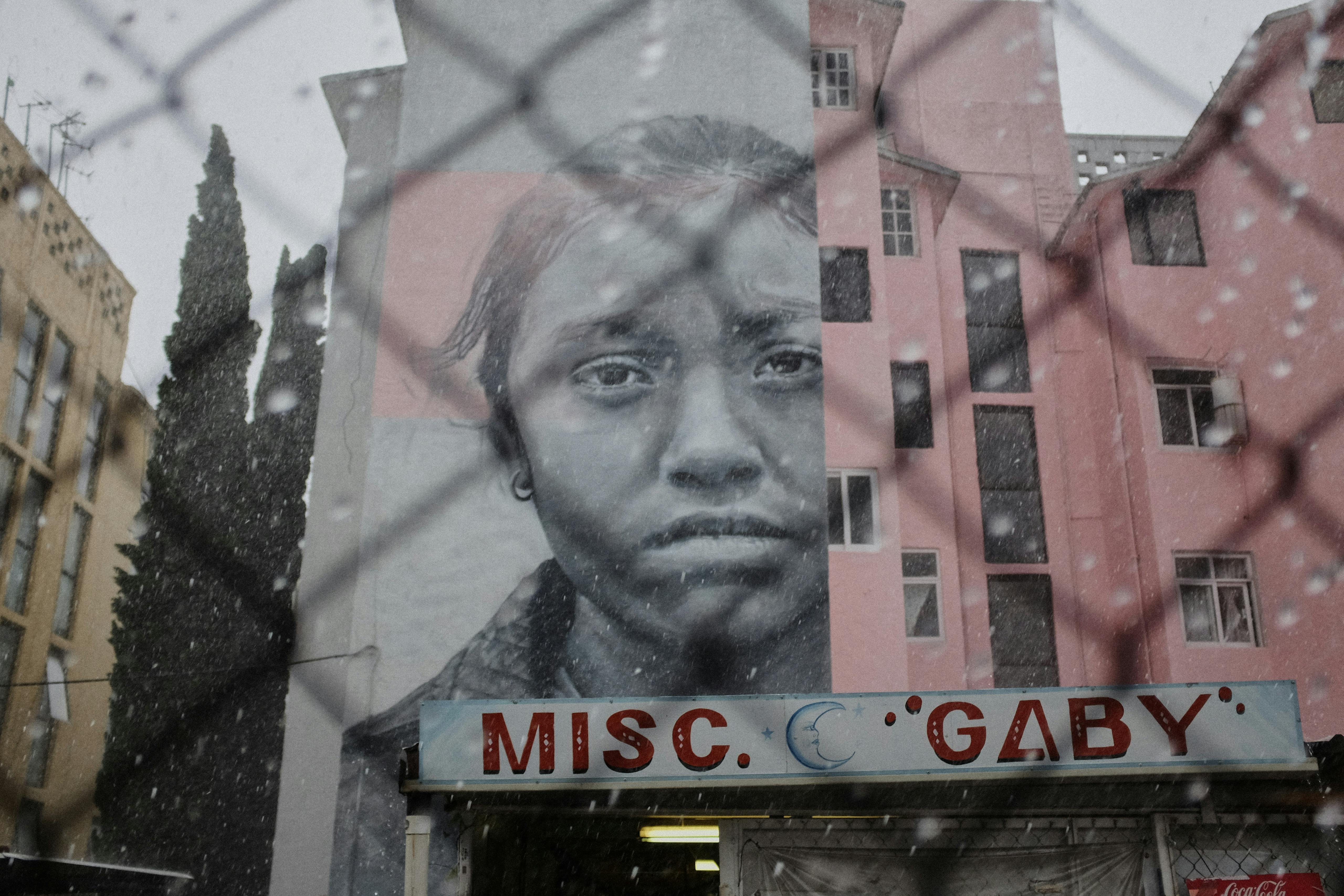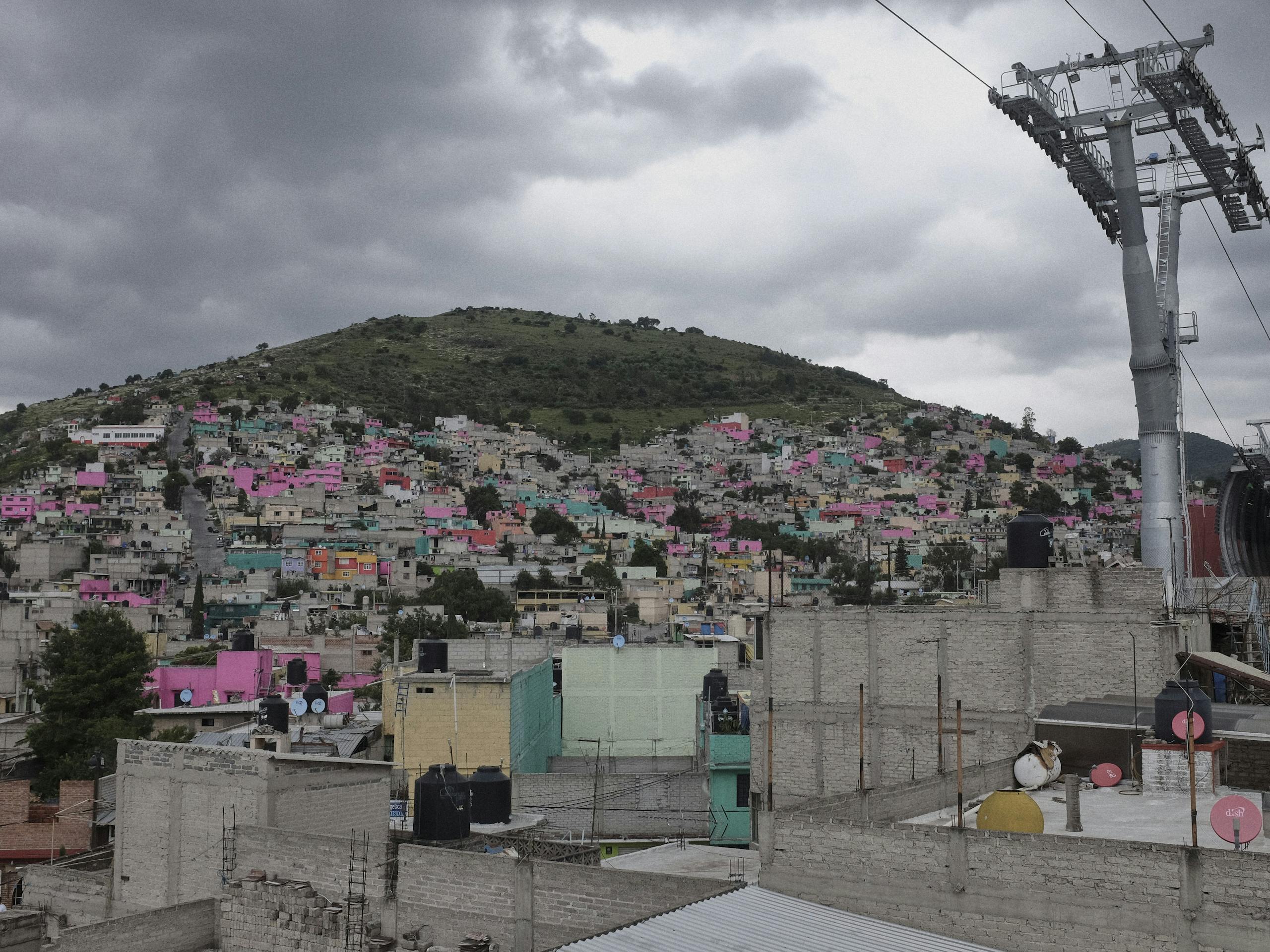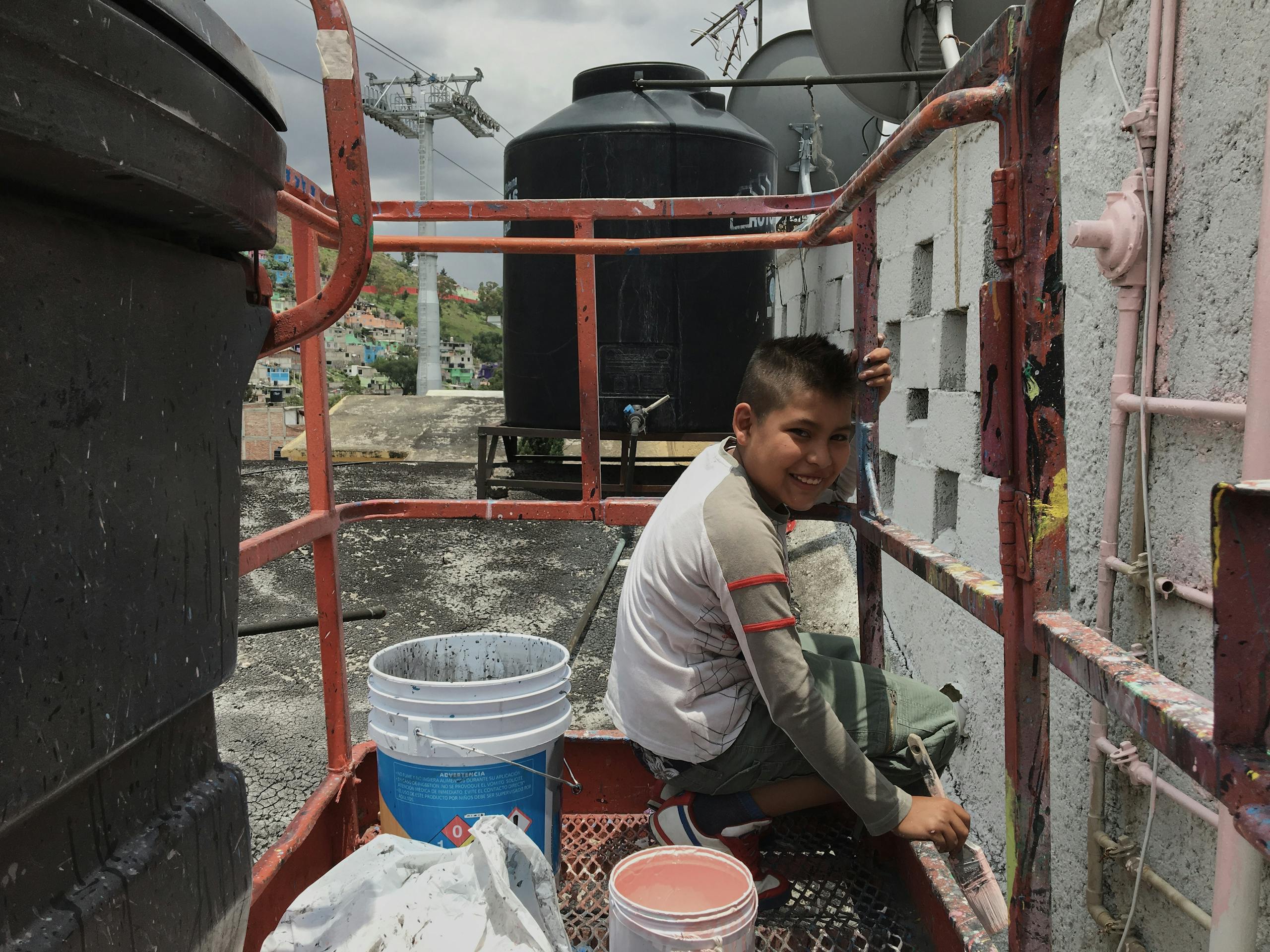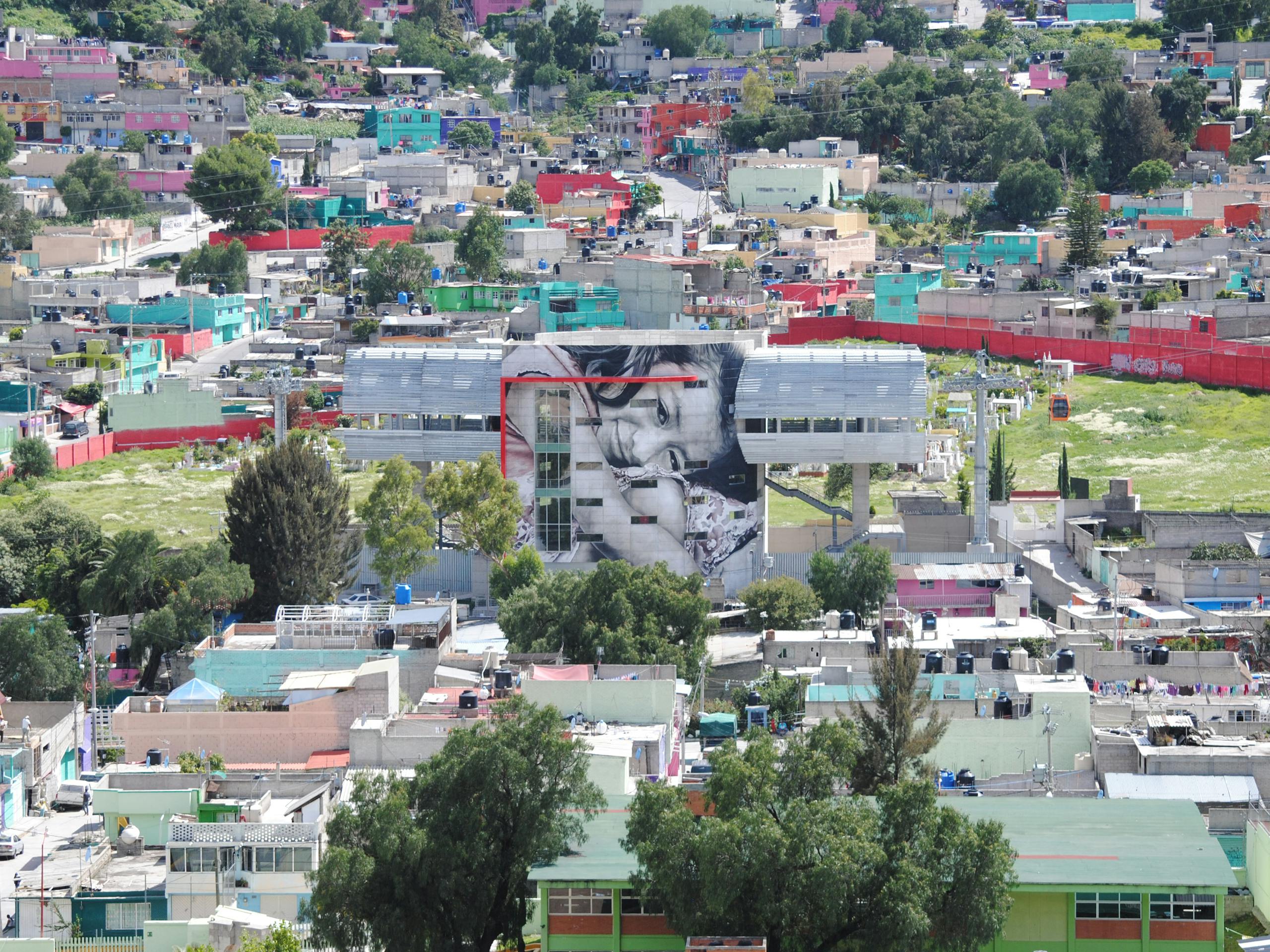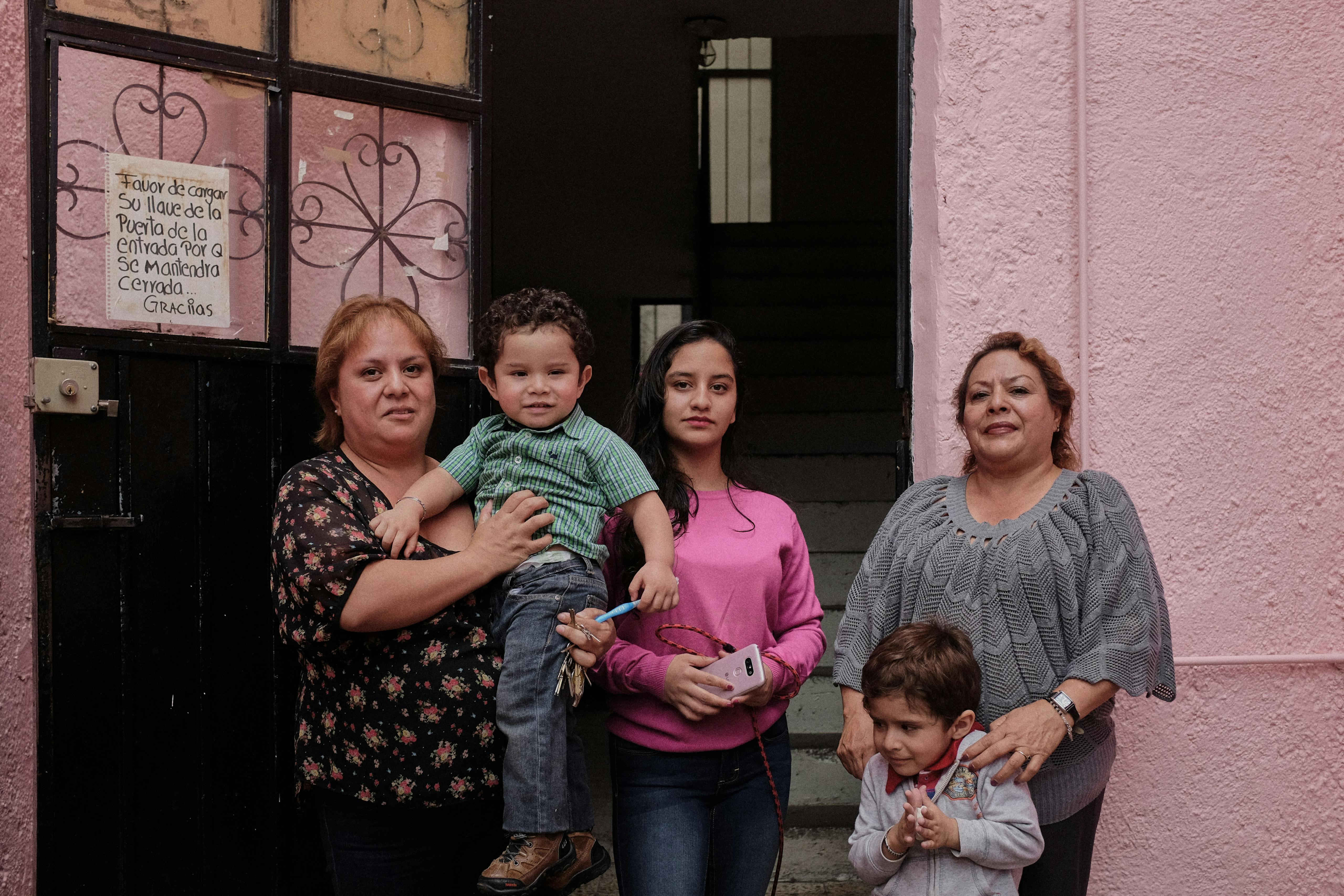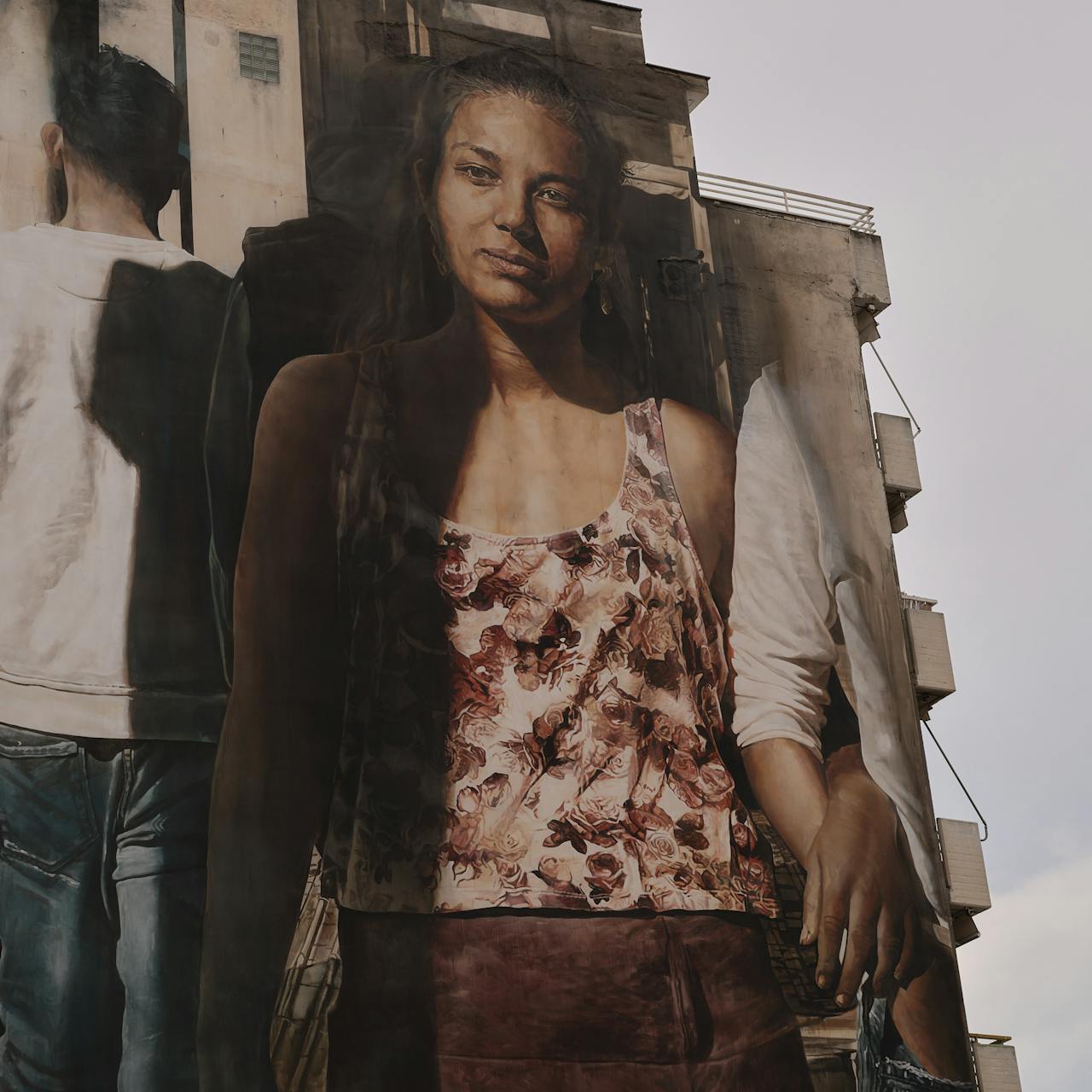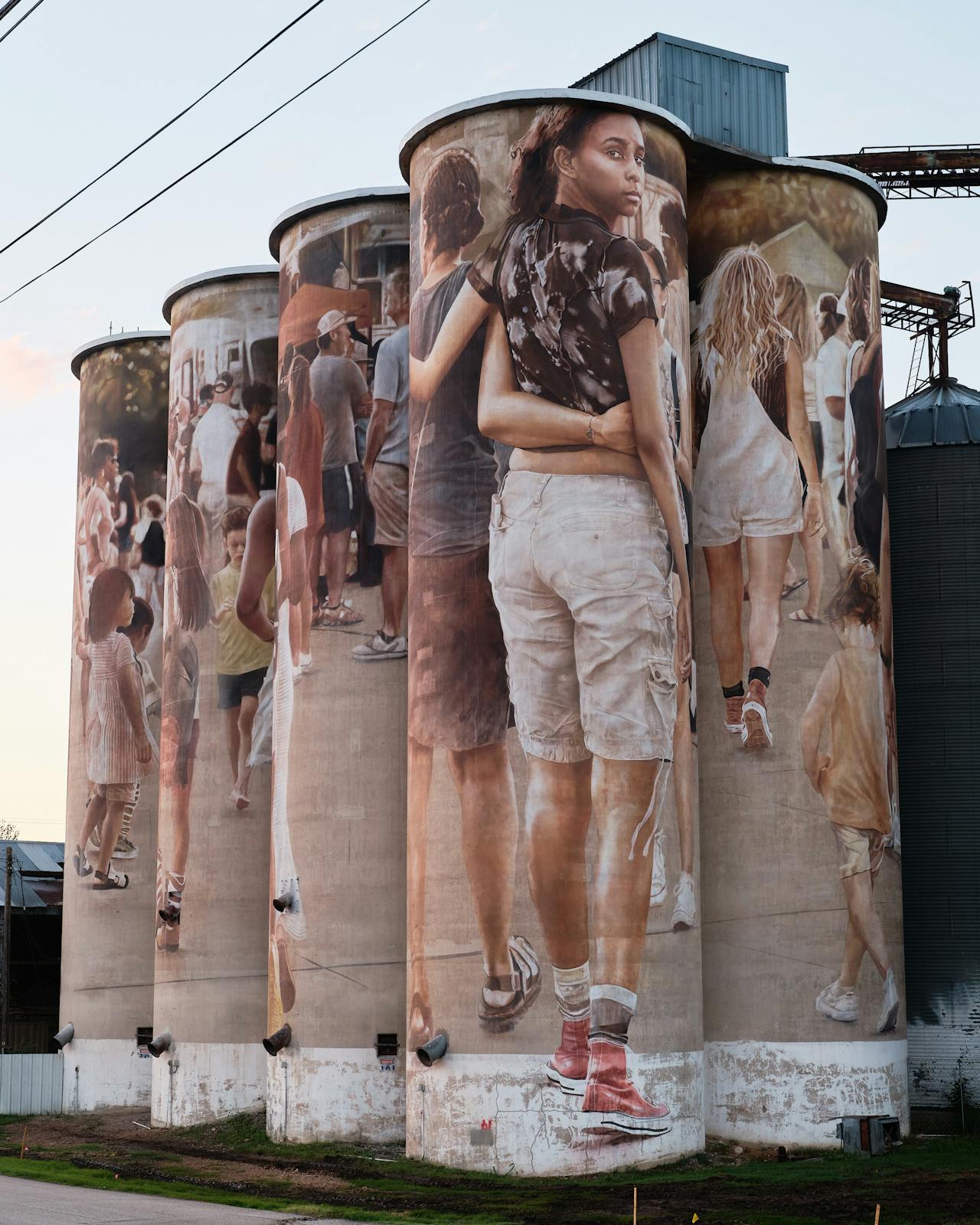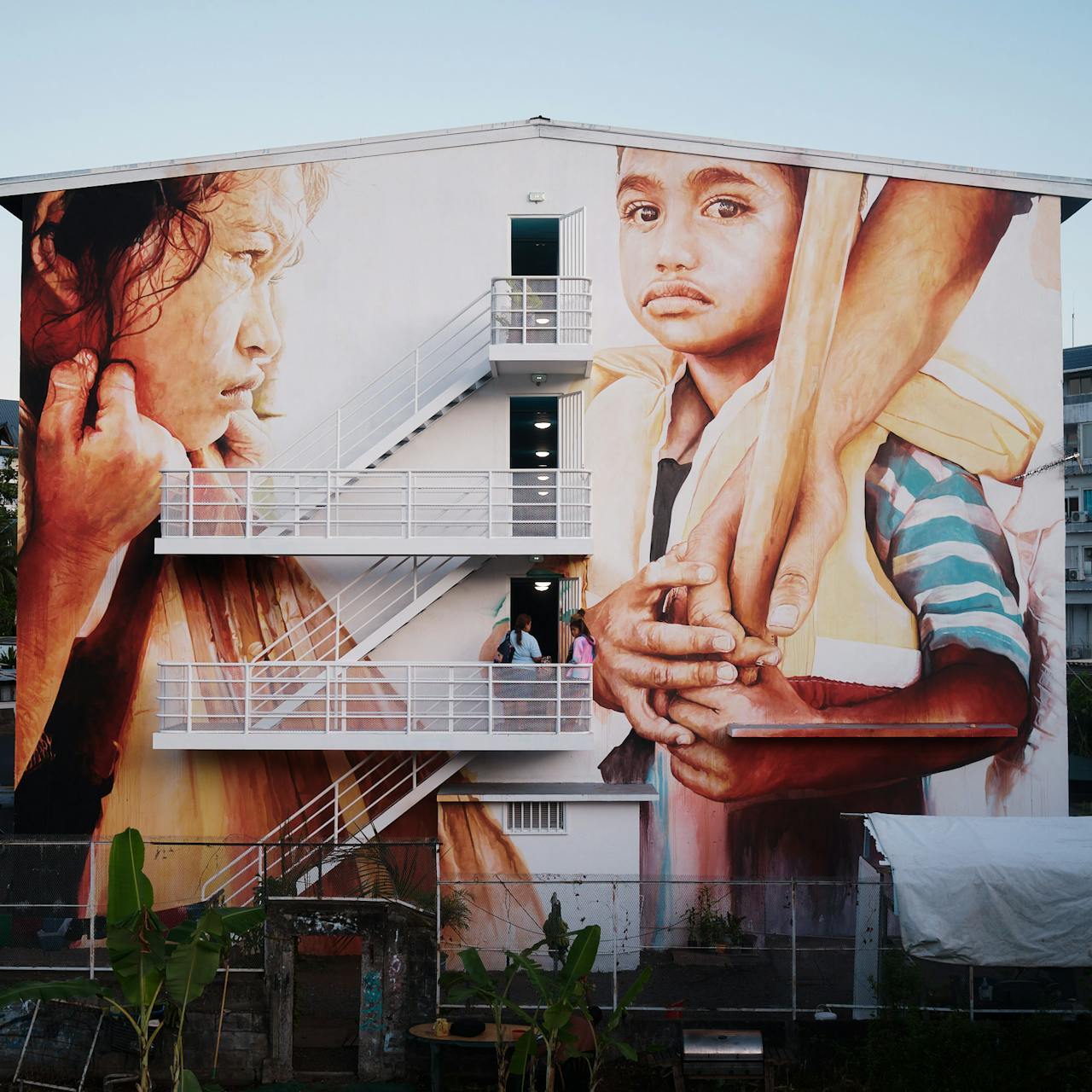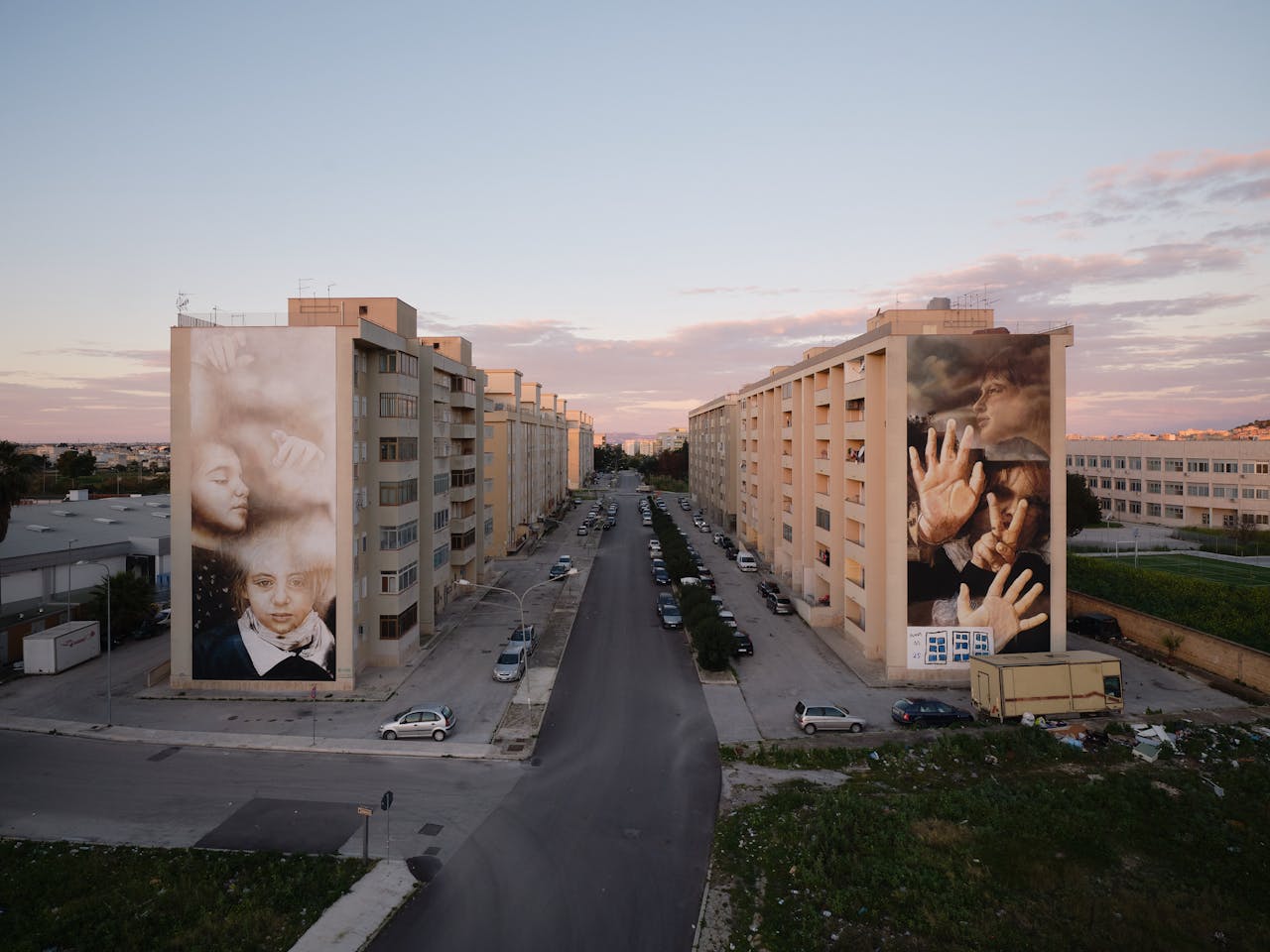Mexicable Project, Part I
Ecatepec de Morelos, Mexico ,
2016
First mural inspired by the women of the Instituto De La Mujer, Ecatepec, Estado de México, Mexico. July 2016 Photograph: Guido van Helten
Part of a series commissioned by Konect1 to launch the Mexicable public transport system in Ecatepec, this mural was inspired by the work of women’s organisation Instituto de la Mujer and represents the community-led social movement against femicide in the State of Mexico.
Text by Seanna van Helten
Project Details
Project
Mexicable Project, Part ILocation
Ecatepec de Morelos, MexicoCommissioner
Konect1 MexicoFrom a poem by activist Susana Chávez Castillo, murdered in Ciudad Juárez in 2011. The lyric has been adapted as ‘Ni Una Más,’ the rallying cry of the social movement advocating for the end of gender-based violence in Mexico, and as #NiUnaMenos in Argentina.
Ni una mujer menos, ni una muerte más
(Not one woman less, not one more death)1
Ecatepec is a sprawling municipality in Estado de Mexico (State of Mexico), just north of Mexico City, populated with brightly coloured cinder-block houses stacked atop steep hills. With over two million residents, it is the second most populous city in the state. It was also once considered the feminicidio (femicide) capital of Mexico, and maintains some of the highest rates of femicide in the country.
Feminicidio, translated as femicide or feminicide in English, is the deliberate killing of a woman or girl because of their gender. Femicide has been recognised as a crime in Mexico since 2007, however it remains a huge social problem. Gender-related killing of women and girls is a worldwide tragedy, and not unique to Ecatepec or Mexico at large – and yet, despite growing awareness over the last few decades, incidences of femicide in Mexico have continued to rise to an average of ten per day.2 Gender-based violence of all forms is widespread, with more than half of all Mexican women estimated to have faced emotional, physical, sexual or economic violence from men, either strangers or partners, according to the National Institute of Statistics and Geography.3
Instituto De La Mujer, Ecatepec, Estado de México, Mexico. July 2016 Photograph: Guido van Helten
Streets in the centre of the city, Ecatepec, Estado de México, Mexico. July 2016 Photograph: Guido van Helten
Women Store Vendors, Ecatepec, Estado de México, Mexico. July 2016 Photograph: Guido van Helten
Education programs at the Instituto De La Mujer, Ecatepec, Estado de México, Mexico. July 2016 Photograph: Guido van Helten
These statistics have pushed the issue of femicide to the top of Mexico’s political agenda, spurred on by a spate of protests by victims’ families, campaigners, and community groups – including the country’s first nationwide female labour strike in March 2020, under the banner #UnDíaSinNosotras (#ADayWithoutUs).4
These groups argue that the on-going crisis is not simply a problem of violent men, but the problem of the laws and cultures that allow violence against women and girls to continue with impunity. They criticise the Mexican government’s lack of political willpower to enforce legislation and to take the problem of femicide more seriously. As a result, some estimates from Mexico’s national human rights commission suggest that 90 per cent of registered femicides go unpunished, with no convictions.5
Streets, Ecatepec, Estado de México, Mexico. July 2016 Photograph: Guido van Helten
Marcela Lagarde y de los Ríos (translated by Charlie Roberts), in Terrorizing Women: Feminicide in the Americas (2010), edited by Rosa-Linda Fregosa and Cynthia Bejarano
Far from being a niche issue, femicide exposes a complex web of social, cultural, and economic inequalities facing Mexican women and making them more vulnerable to gender-based crime – from a culture of machismo and male dominance6 to a gender wage gap of almost 35 per cent.7 As feminist anthropologist Marcela Lagarde y de los Ríos explains, femicide occurs when social conditions and practices allow for it – when gender inequality is tolerated and violent attempts against the lives and liberties of girls and women become normalised and accepted. If the government is incapable of guaranteeing respect for women’s lives and rights, Lagarde argues, then this makes feminicidio “a state crime.”8
Portraits at the Instituto De La Mujer, Ecatepec, Estado de México, Mexico. July 2016 Photograph: Guido van Helten
Cynthia Galicio, a lawyer who was named the national expert in gender violence by Mexico’s National Institute for Women and assigned to the National Observatory for Gender Equality in 2015, quoted by Nidia Bautista, NACLA (February 2019)
When you stop to think about what the government is failing to do, you realize that femicide can be deterred if the state does the following: protect, address and prevent. But they don’t protect women, they don’t address cases and they don’t prevent violence.9
The protest movement against femicide expresses the community’s shock, outrage, and mourning for those who have lost their lives, but it is also seen as a call for greater change – devoting more resources to investigating femicide cases, enforcing tougher sentences, and investing in women’s rights to safety and freedom.
Education programs at the Instituto De La Mujer, Ecatepec, Estado de México, Mexico. July 2016 Photograph: Guido van Helten
Guido van Helten was invited to Ecatepec in the summer of 2016 as part of a public art project commissioned for Mexicable, the city’s first public cable car network. With some understanding of the impacts of femicide in Ecatepec, van Helten reached out to the Instituto de la Mujer – a local non-profit organisation which focuses on skills development, jobs creation, and other forms of social support for women in the community.
A United Nations report from 2018 advised that women-centred community efforts to coordinate with local justice, health, education, and social services – like those practised by the Instituto de la Mujer – are vital to the fight against femicide, alongside effective preventative and criminal justice measures to promote women’s safety and empowerment and ensure offender accountability.10
Portraits at the Instituto De La Mujer, Ecatepec, Estado de México, Mexico. July 2016 Photograph: Guido van Helten
Portraits at the Instituto De La Mujer, Ecatepec, Estado de México, Mexico. July 2016 Photograph: Guido van Helten
Portraits at the Instituto De La Mujer, Ecatepec, Estado de México, Mexico. July 2016 Photograph: Guido van Helten
Portraits at the Instituto De La Mujer, Ecatepec, Estado de México, Mexico. July 2016 Photograph: Guido van Helten
Inspired by his conversations and collaboration with community organisers at the institute, van Helten’s mural design represents two women from different generations acting in concert to improve the lives of women in Estado de Mexico. Colour is often used in Mexican architecture, and Van Helten chose to feature the colour pink to link the two women’s portraits – pink is prominent in the streets of Ecatepec, but it has also become the unofficial symbolic colour of the movement against femicide, and is used to commemorate its victims.
Bringing together these symbols, the painting was created in support of the social movement against femicide and for the advancement and empowerment of women and girls as a priority for the state. Like the social movement, the painting intends to memorialise women’s lives and to draw attention to the bearing of femicide on women’s psyches.
The re-painting of the building in Mexican Pink, Ecatepec, Estado de México, Mexico. July 2016 Photograph: Guido van Helten
The re-painting of the building in Mexican Pink, Ecatepec, Estado de México, Mexico. July 2016 Photograph: Guido van Helten
Work in progress during summer storms, Ecatepec, Estado de México, Mexico. July 2016 Photograph: Guido van Helten
Work in progress during summer storms, Ecatepec, Estado de México, Mexico. July 2016 Photograph: Guido van Helten
The re-painting of the building in Mexican Pink, Ecatepec, Estado de México, Mexico. July 2016 Photograph: Guido van Helten
Part of a constellation of murals commissioned by the government along the Mexicable route, the mural is visible to commuters riding the cable car above.
Cable car line runs through the most densely populated hills of the city, Ecatepec, Estado de México, Mexico. July 2016 Photograph: Guido van Helten
Local youth Ibrahim helps Guido with the re-painting of the building in Mexican Pink, Ecatepec, Estado de México, Mexico. July 2016 Photograph: Guido van Helten
As told to Enriquet A. Arias, Instagrafite (December 2016), Interview: Guido van Helten
I only wanted to give the locals something that will take their thoughts away from the rough reality, if only for a few seconds.11
Van Helten also painted a mural, titled Valeria, on one of the cable car stations – Station #6 “Deportivo” – in the seven-stop Mexicable line.
Guido's second piece entitled 'Valeria' at Mexicable Station 6, Ecatepec, Estado de México, Mexico. July 2016 Photograph: Guido van Helten
Launched in late 2016, the country’s first public cable car service was designed to bypass Ecatepec’s notoriously congested streets. The Mexicable system not only suits Ecatepec’s mountainous setting, but helps overcome the city’s chaotic sprawl – a consequence of limited urban planning and of Ecatepec’s population spike following the 1985 earthquake in Mexico City.12 The lack of planning not only led to traffic congestion and punishing commuter journeys but is also, according to activist María Salguero Bañuelos, another factor impacting women’s safety in Ecatepec: “Everything is spread out. People have to travel two hours to get into Mexico City. There is no street lighting. You have to cross vacant lots. It gives refuge to predators.”13
Powered by solar energy and equipped with surveillance security, the Mexicable has been praised for providing a quick, safe, and accessible mode of transport for the municipality’s low-income workers,14 and for improving safety for the female commuters among them. Safe public transportation is one of UN Women’s key strategies for ending violence against women and girls, allowing women to exercise their right to freedom of movement and their right to use and enjoy the city and its public spaces.15
Completed mural, Ecatepec, Estado de México, Mexico. July 2016 Photograph: Guido van Helten
Completed mural, Ecatepec, Estado de México, Mexico. July 2016 Photograph: Guido van Helten
Residents at the murals location, Ecatepec, Estado de México, Mexico. July 2016 Photograph: Guido van Helten
Gold Stadt (City of Gold)
Pforzheim, Germany, 2023
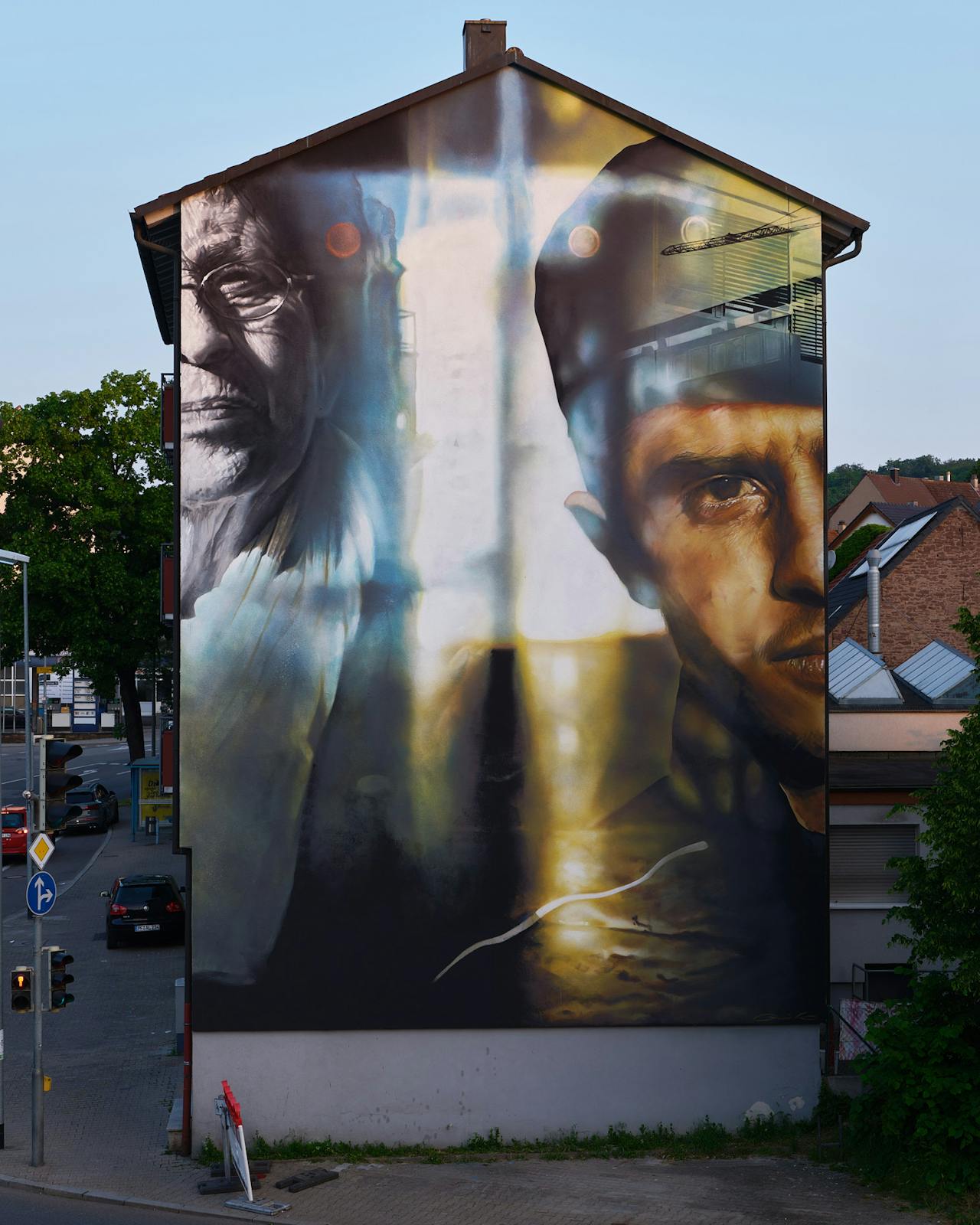
Gold Stadt (City of Gold) conjures thoughts of destruction and...
Bookbinders in Exarcheia
Exarcheia, Athens, Greece, 2021
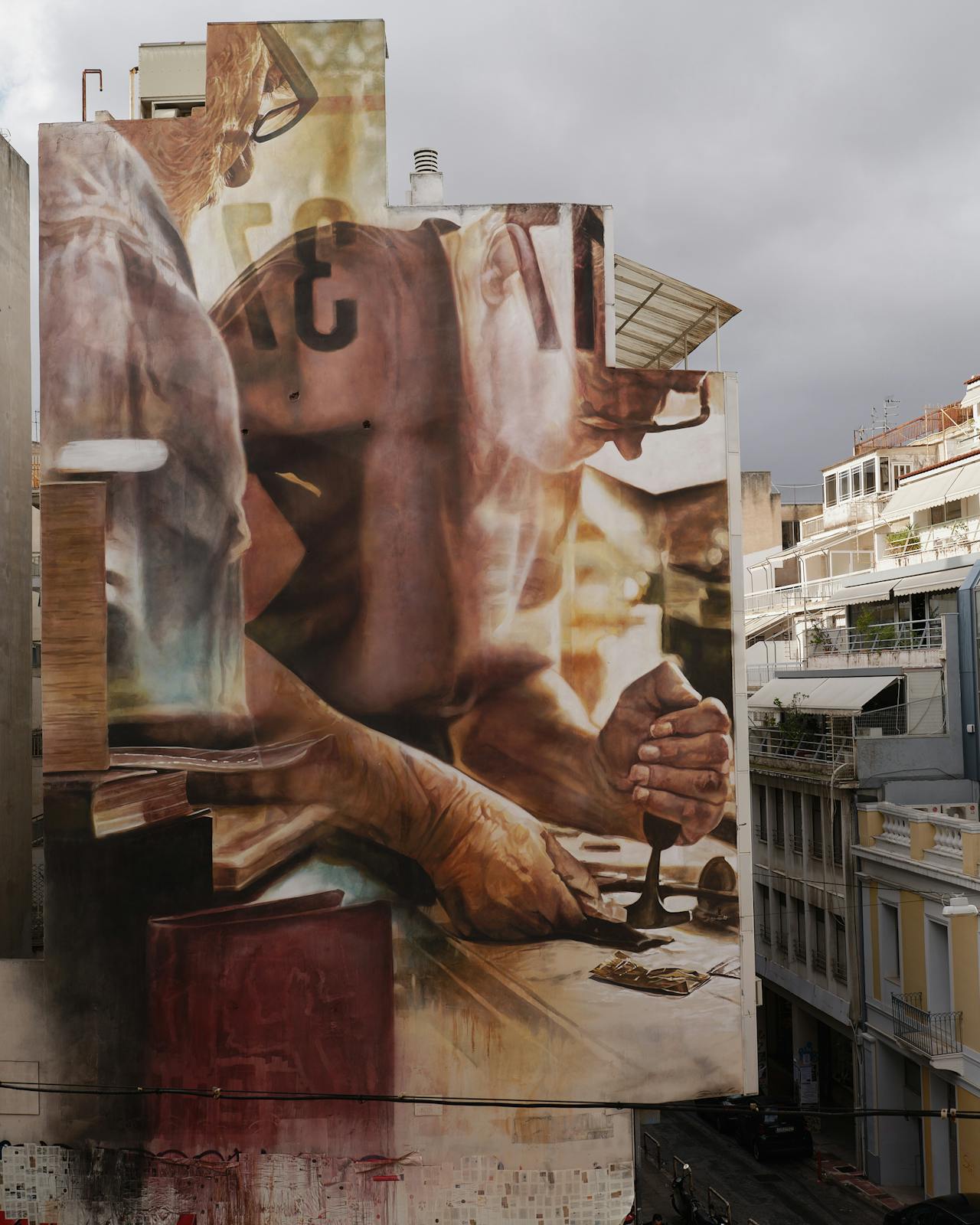
This work explores the collective identity of Exarcheia, a central...
YYC Bump
Calgary, Canada, 2019
Exploring the shared iconographic relationships and cultural usage...
Hold Water I
Azraq, Jordan, 2019
Installed on a water tower in the small community of Azraq, Jordan,...
Southern Cross University
Gold Coast, Australia, 2018
In early 2018 I was invited to create a mural at the Gold Coast...
Solar de Samaniego
Laguardia, Spain, 2016
Commissioned by Solar de Samaniego winery in the wine producing...
Melbourne Polytechnic
Melbourne, Victoria, Australia, 2017
This work visually explores the interaction of human stories and...
UPEA Festival I
Helsinki, Finland, 2016
Muistot Unelmien'(Remembering a Dream) Painted in Helsinki Finland...
A Portrait of an Artist: Collaboration with Selina Miles
Grímsey, Iceland, 2015
In August 2015, film director Selina Miles travelled with artist...
Back Alley Gallery
Lismore, New South Wales, 2016
Titled 'Willow' after the subject of the painting this piece was...
Urban Myths
Minsk, Belarus, 2015
In late 2015 I was invited to participate in the Urban Myths...
Lily of the Valley
Kiev, Ukraine, 2015
конвалія (Lily of the Valley) painted as part of CityArt project in...
Akureyravaka
Akureyri, Iceland, 2014
'Painted for Akureyrarvaka Menningarnótt (culture night) in 2014...
